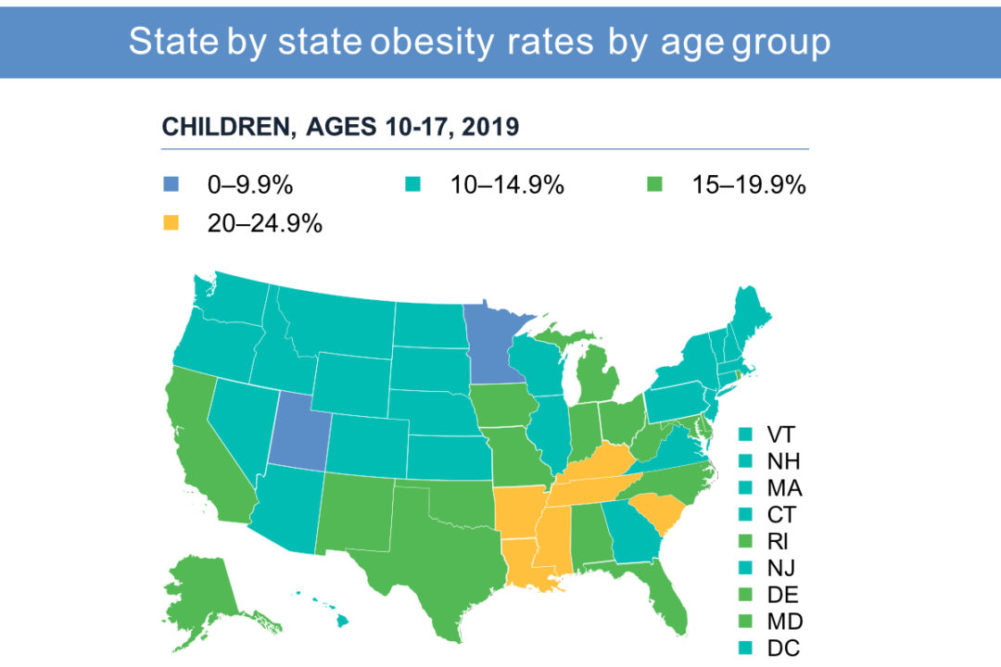PRINCETON, NJ. — The national obesity rate for children between the ages of 10 and 17 was 15.5% in 2018-19. The rate is in danger of increasing as the coronavirus (COVID-19) has made it more difficult for children to access healthy food, according to a Oct. 14 report issued by the Robert Wood Johnson Foundation.
“I actually think that the two crises that we face as a nation intersect in so many ways,” Jamie Bussel, a senior program officer with the RWJF, said of the pandemic and obesity. “So the COVID epidemic, to me, really underscores the clear and urgent need to reform the long-standing discriminatory systems and policies that have really harmed our health, particularly the health of people and communities that are farthest from opportunity.”
The RWJF, a philanthropy based in Princeton and dedicated solely to health, made funding recommendations for the Supplemental Nutrition Assistance Program (SNAP), the Women, Infants, and Children’s (WIC) program, and federal school lunch programs.
“All of the policy recommendations have proven science behind them, proven health benefits,” Bussel said. “They will all be helpful in responding both to the pandemic more broadly and in helping kids grow up at a healthy weight.”
The RWJF calls for raising the maximum SNAP benefit level by at least 15% per participant for the duration of the economic downturn brought on by the pandemic. USDA data from April showed nearly 43 million people were in SNAP, an increase of nearly 6 million from March.
States currently may waive some of the requirements that typically are part of the WIC program, such as a requirement to apply in person, and waive some of the minimum stocking requirements for participating providers. The RWJF said the waivers should be left in place for WIC, which serves about 6.3 million people.
The US Department of Agriculture should support states in using existing waivers to all students through the 2020-21 school year, according to the RWJF, which noted school closings leave millions of children without a regular source of healthy meals or physical activity.
“The initial COVID-19 relief packages have been helpful, and Congress and the (Trump) administration recently made some important shifts that extend some of those benefits,” Bussel said. “So as an example, schools are able to serve free meals to all kids throughout the entire school year.”
The RWJF used data from the 2018-19 National Survey of Children’s Health and analysis conducted by the Health Resources and Services Administration’s Maternal and Child Health Bureau for its report. The 15.5% obesity rate for children age 10 to 17 was down from 16.1% in 2016 but not down significantly.
The obesity rates differed by ethnic groups and income levels.
“We also continue to see significant and stark differences by race and by income,” Bussel said. “Rates are much higher among kids of color, for African-American, Latino, Native American kids compared to their white and Asian counterparts. We see the same for children who are coming from lower income households. Rates are more than twice as high compared to kids who come from more affluent families.”
Obesity rates were higher for native Hawaiian/other Pacific islander children at 39.8%, for American Indian/Alaska native at 28.5%, for non-Hispanic Black at 22.9% and for Hispanic at 20.7%. Non-Hispanic Asian children had the lowest obesity rate at 5.9% and were followed by non-Hispanic white children at 11.7% and non-Hispanic multiple race children at 14.7%. In households making less than the federal poverty level, children had obesity rates of 21.5%, which compared with 8.8% for children in households making at least 400% of the federal poverty level.
In state results, Kentucky had the highest overall youth obesity rate at 23.8%. Utah had the lowest rate at 9.6%.
While the RWJF study did not address the food and beverage industry, Bussel said companies could be part of the solution to reducing childhood obesity. She said they could refrain from marketing unhealthy products to children.
“The marketing matters, and I think that food companies need to be on the right side of history,” she said.


